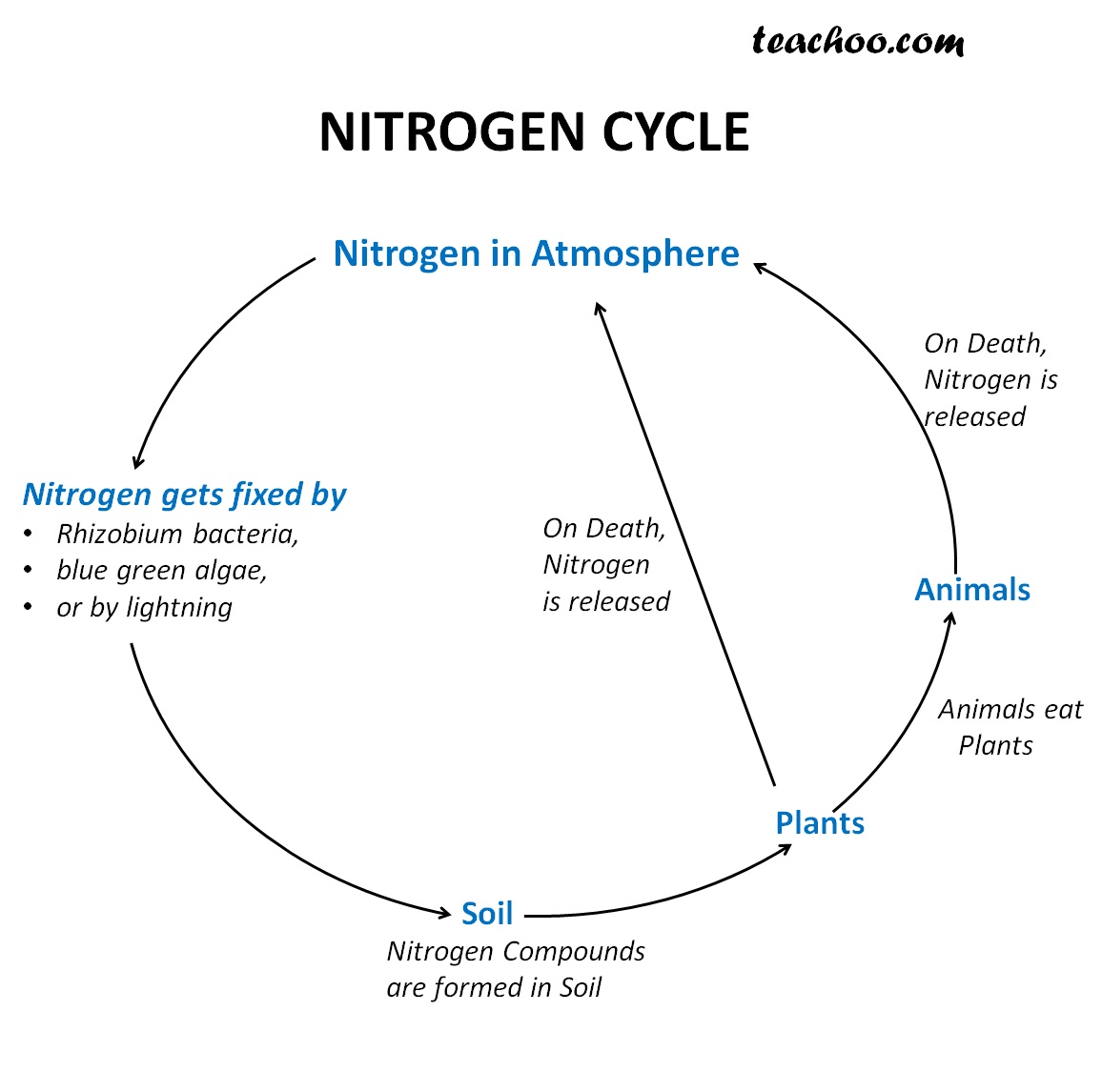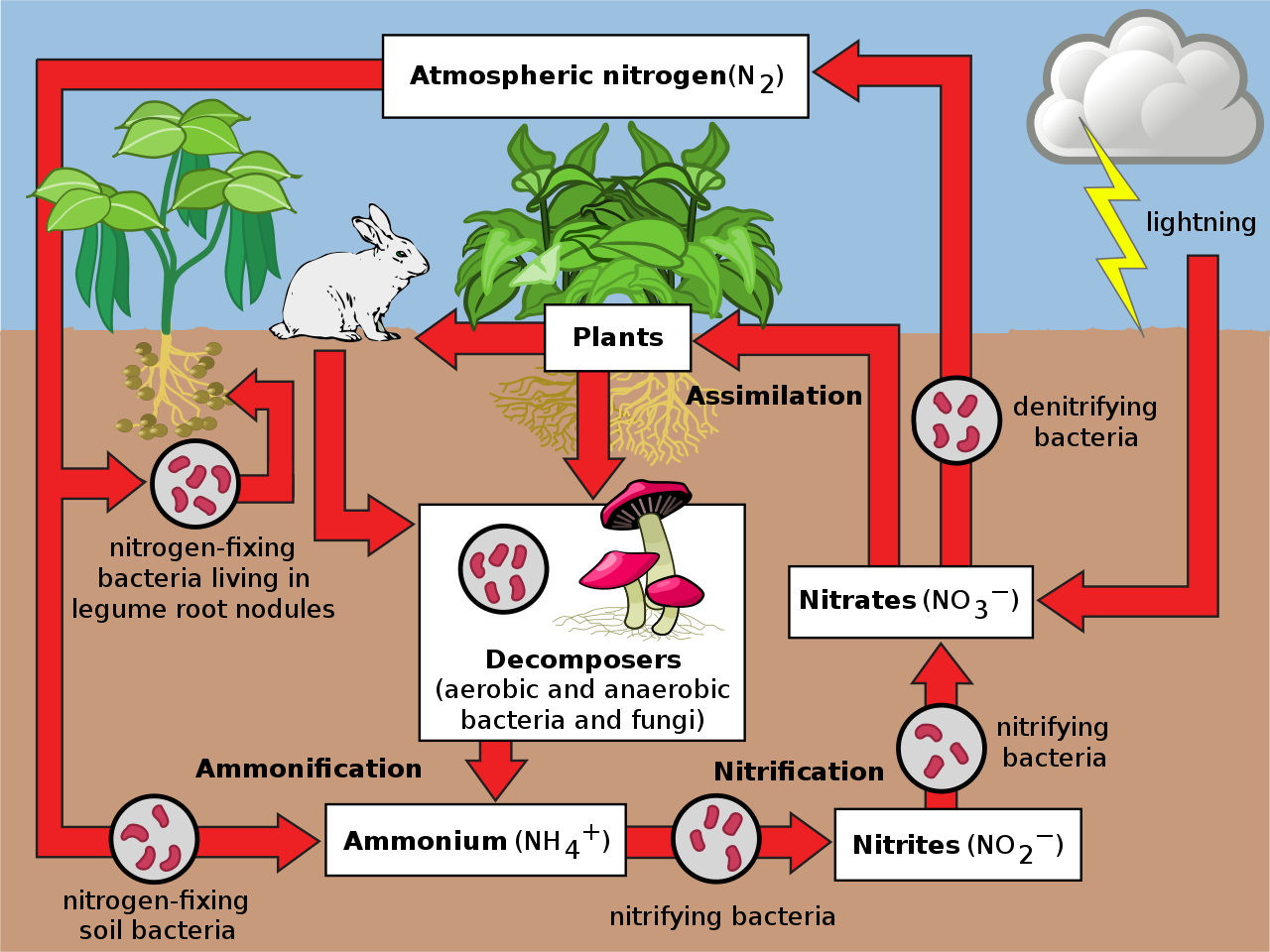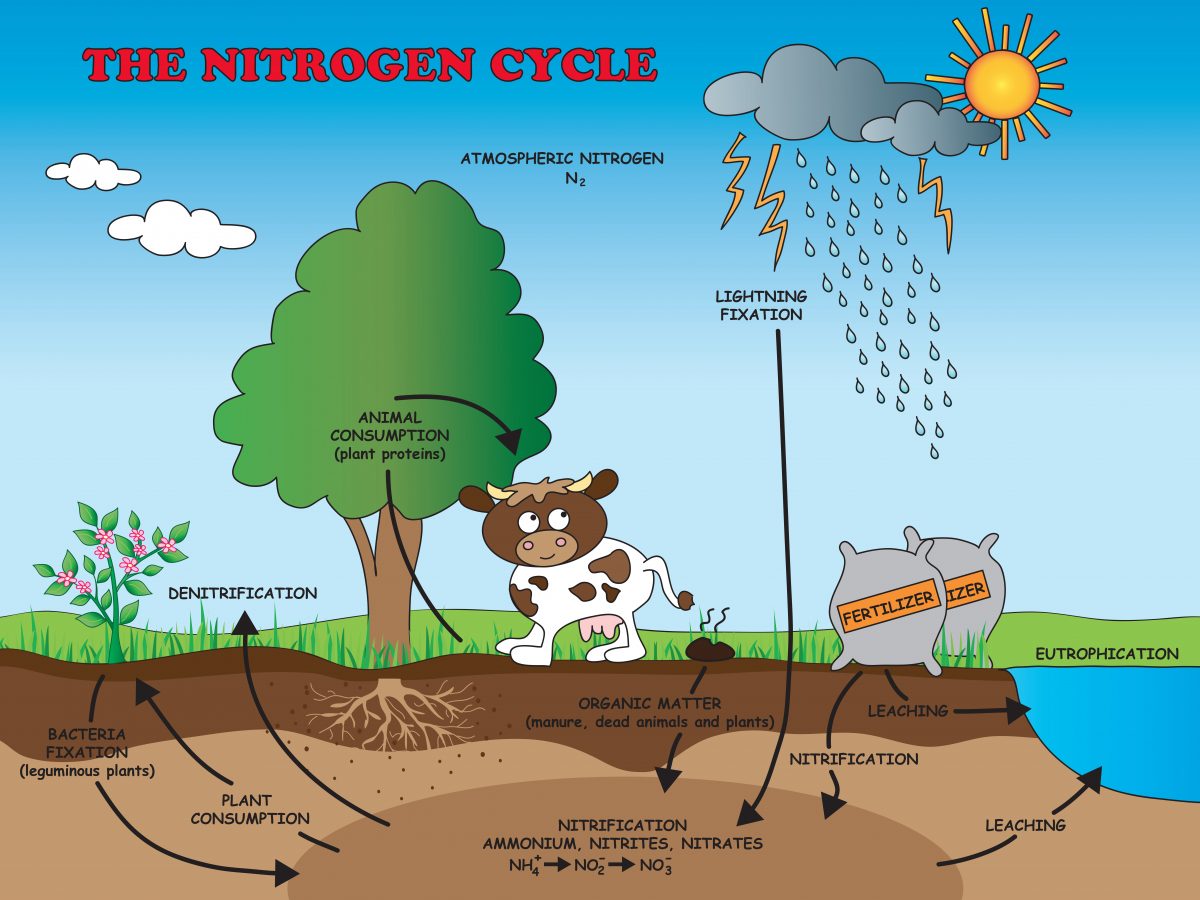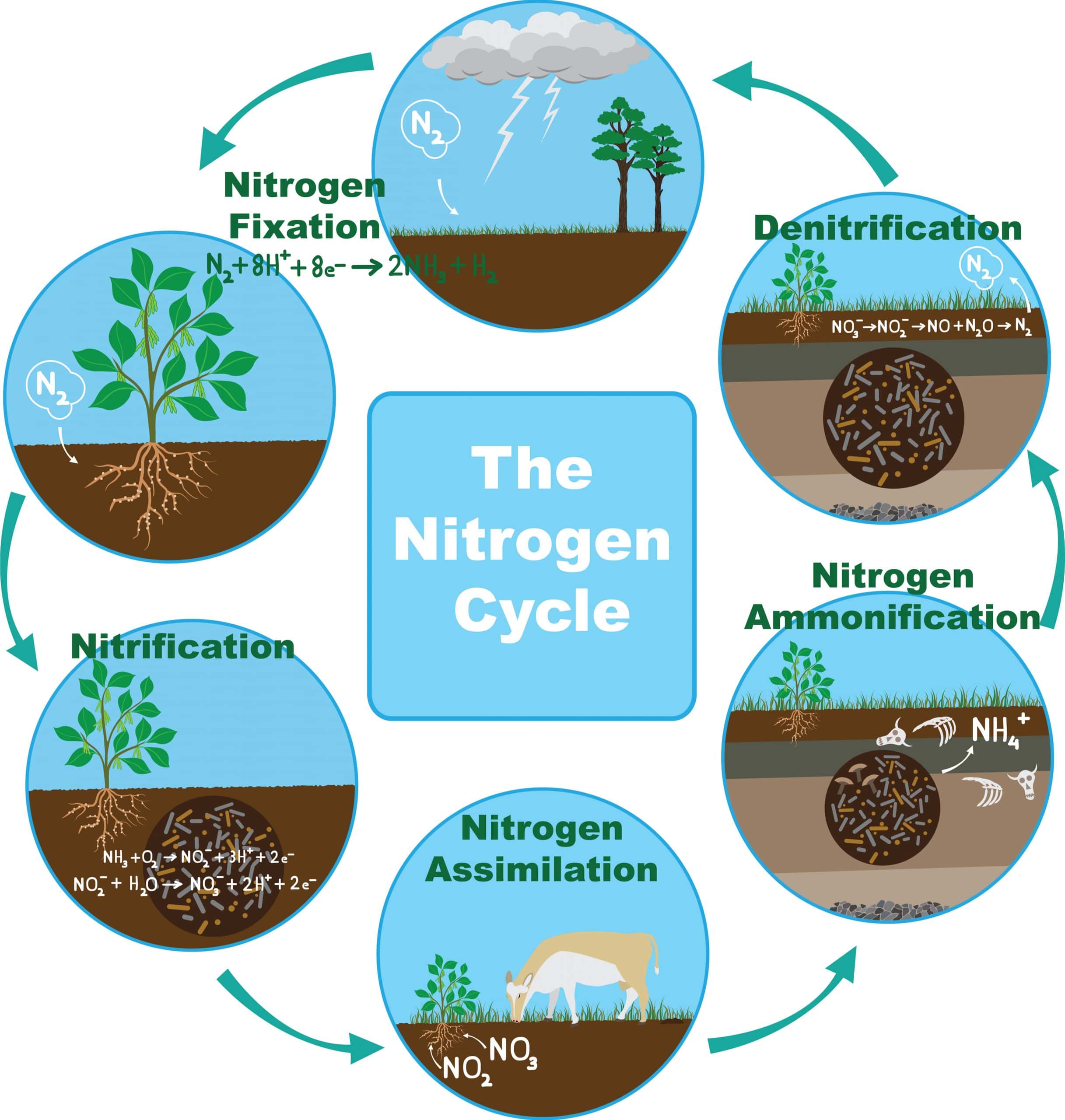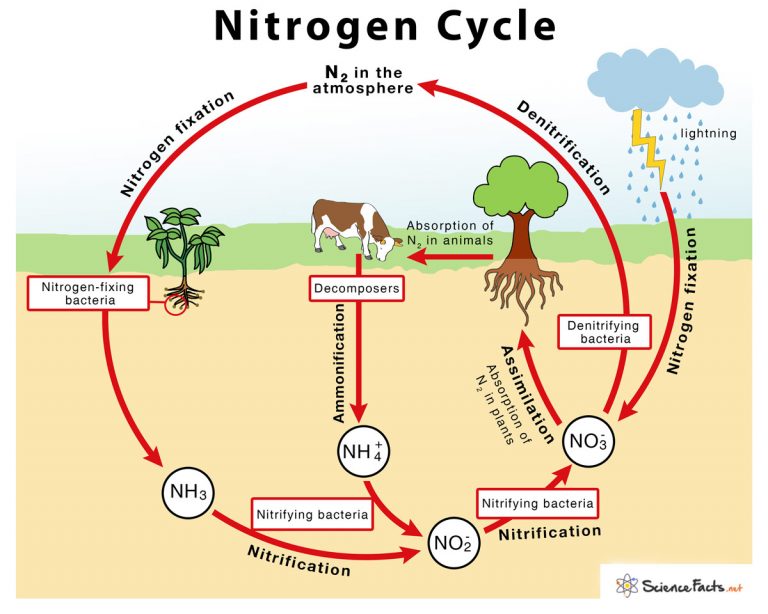Draw The Nitrogen Cycle
Draw The Nitrogen Cycle - Most plants, thus, take in nitrogen as nitrate or ammonia. (iv) fixation of nitrogen, and (v) denitrification ammonification: Microorganisms play major roles in all four of these. Through the cycle, atmospheric nitrogen is converted to a form which plants can incorporate into new proteins. Nitrogen fixation believe it or not, lightning and bacteria are primarily responsible for turning atmospheric nitrogen into nitrogen living things can use, in a process called nitrogen fixation.
Nitrogen is required for all organisms to live and grow because it is the essential component of dna, rna, and protein. Web this article explores how nitrogen becomes available to organisms and what changes in nitrogen levels as a result of human activity means to local and global ecosystems. Web nitrogen cycle is a biogeochemical process through which nitrogen is converted into many forms, consecutively passing from the atmosphere to the soil to organism and back into the atmosphere. Nitrogen fixation occurs in three steps: It has done by rhizobium bacteria. Although 78 percent of the atmosphere is nitrogen gas, this gas is unusable by most organisms until it is made available by a series of microbial transformations. (iv) fixation of nitrogen, and (v) denitrification ammonification:
Nitrogen Cycle QCE Biology Revision
Web the nitrogen cycle consists of four steps: There's a chemical change right there. Describe the role of carbon in the process of photosynthesis. Web the nitrogen cycle is the set of biogeochemical processes by which nitrogen undergoes chemical reactions, changes form, and moves through difference reservoirs on earth, including living organisms. Although 78 percent.
Nitrogen Cycle Diagram with Steps Explained Teachoo Concepts
Most plants, thus, take in nitrogen as nitrate or ammonia. Nitrogen, a component of proteins and nucleic acids, is essential to life on earth. Web the nitrogen cycle is the biogeochemical cycle by which nitrogen is converted into multiple chemical forms as it circulates among atmospheric, terrestrial, and marine ecosystems. It has done by rhizobium.
What is Nitrogen Cycle? Diagram, Stages, Importance Tutoroot
This form of nitrogen is referred to as ‘fixed’ nitrogen as it can now enter biological processes. Web figure 17.2.2.1 nitrogen cycle. Through the cycle, atmospheric nitrogen is converted to a form which plants can incorporate into new proteins. Most plants, thus, take in nitrogen as nitrate or ammonia. Animals obtain these compounds when they.
Nitrogen Cycle Easy Diagram Nitrogen Cycle Diagram Sanders Doreas
Web this article explores how nitrogen becomes available to organisms and what changes in nitrogen levels as a result of human activity means to local and global ecosystems. Web nitrogen cycle diagram. Web the nitrogen cycle consists of four steps: (i) ammonification (ii) nitrification, (iii) nitrogen uptake by plants, advertisements: It involves several processes such.
How to Draw the Nitrogen Cycle 8 Steps (with Pictures) wikiHow
Web figure 17.2.2.1 nitrogen cycle. Web nitrogen cycle, circulation of nitrogen in various forms through nature. Nitrogen is required for all organisms to live and grow because it is the essential component of dna, rna, and protein. Web the nitrogen cycle is the set of biogeochemical processes by which nitrogen undergoes chemical reactions, changes form,.
Nitrogen Cycle Facts for Kids (Explained!) Education site
The entire process of the nitrogen cycle, one of the important biogeochemical cycle takes place in five stages: Web there are many different types of nitrogen fixation (most of which are not well studied) — my answer focuses on the system where rhizobia (a genus of bacteria) associate with a group of plants known as.
Understanding the Nitrogen Cycle Beginners Education AlgaeBarn
(1) nitrogen fixation, (2) decay, (3) nitrification, and (4) denitrification. Although 78 percent of the atmosphere is nitrogen gas, this gas is unusable by most organisms until it is made available by a series of microbial transformations. Nitrogen fixation occurs in three steps: It has done by rhizobium bacteria. It involves several processes such as.
Nitrogen Cycle Definition, Steps, Importance with Diagram
Web nitrogen cycle is a biogeochemical process through which nitrogen is converted into many forms, consecutively passing from the atmosphere to the soil to organism and back into the atmosphere. Web nitrogen cycle diagram. (1) nitrogen fixation, (2) decay, (3) nitrification, and (4) denitrification. Web this article explores how nitrogen becomes available to organisms and.
Nitrogen cycle Steps of Nitrogen cycle Online Biology Notes
The rhizobia are encased in a structure known as a nodule on the roots of legumes. Web nitrogen cycle, circulation of nitrogen in various forms through nature. Web nitrogen cycle is a biogeochemical process through which nitrogen is converted into many forms, consecutively passing from the atmosphere to the soil to organism and back into.
Nitrogen cycle diagram drawing/how to draw Nitrogen cycle labeled
The nitrogen cycle involves atmospheric inorganic nitrogen (n2) turning into organic ammonia (nh3). During this step, atmospheric nitrogen gas is fixed, or converted into a form that can be used by plants and animals. Web nitrogen cycle is a biogeochemical process through which nitrogen is converted into many forms, consecutively passing from the atmosphere to.
Draw The Nitrogen Cycle Web nitrogen cycle is a biogeochemical process through which nitrogen is converted into many forms, consecutively passing from the atmosphere to the soil to organism and back into the atmosphere. The entire process of the nitrogen cycle, one of the important biogeochemical cycle takes place in five stages: The rhizobia are encased in a structure known as a nodule on the roots of legumes. Web this article explores how nitrogen becomes available to organisms and what changes in nitrogen levels as a result of human activity means to local and global ecosystems. Animals obtain these compounds when they eat the plants.
Web The Nitrogen Cycle Is The Cyclic Movement Of Nitrogen In Different Chemical Forms Between Living Organisms And The Environment.
Most plants, thus, take in nitrogen as nitrate or ammonia. Web there are many different types of nitrogen fixation (most of which are not well studied) — my answer focuses on the system where rhizobia (a genus of bacteria) associate with a group of plants known as legumes (e.g.s beans, clovers, alfalfa). Web in general, the nitrogen cycle has five steps: Web the nitrogen cycle consists of four steps:
Web Nitrogen Cycle, Circulation Of Nitrogen In Various Forms Through Nature.
The nitrogen cycle involves atmospheric inorganic nitrogen (n2) turning into organic ammonia (nh3). Microorganisms play major roles in all four of these. During this step, atmospheric nitrogen gas is fixed, or converted into a form that can be used by plants and animals. Web the nitrogen cycle is the biogeochemical cycle by which nitrogen is converted into multiple chemical forms as it circulates among atmospheric, terrestrial, and marine ecosystems.
Web Decomposition Plants Take Up Nitrogen Compounds Through Their Roots.
Nitrogen fixation occurs in three steps: Nitrogen is required for all organisms to live and grow because it is the essential component of dna, rna, and protein. Human activity can release nitrogen into the environment by the combustion of fossil fuels and by the use of artificial fertilizers in agriculture. The rhizobia are encased in a structure known as a nodule on the roots of legumes.
Four Processes Participate In The Cycling Of Nitrogen Through The Biosphere:
Web the nitrogen cycle is the set of biogeochemical processes by which nitrogen undergoes chemical reactions, changes form, and moves through difference reservoirs on earth, including living organisms. The entire process of the nitrogen cycle, one of the important biogeochemical cycle takes place in five stages: Through the cycle, atmospheric nitrogen is converted to a form which plants can incorporate into new proteins. Although 78 percent of the atmosphere is nitrogen gas, this gas is unusable by most organisms until it is made available by a series of microbial transformations.


